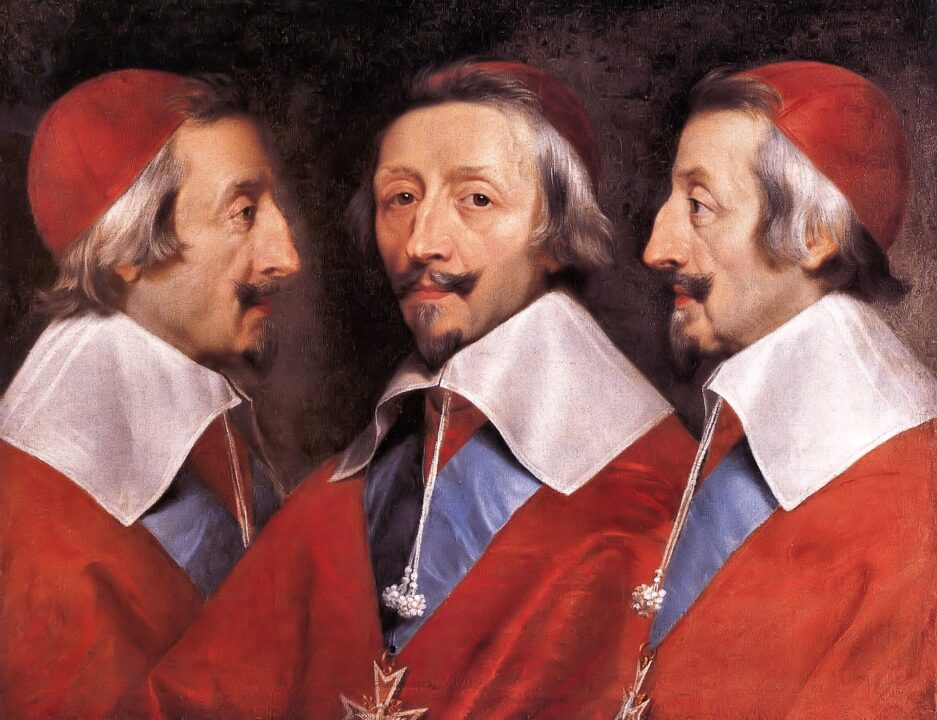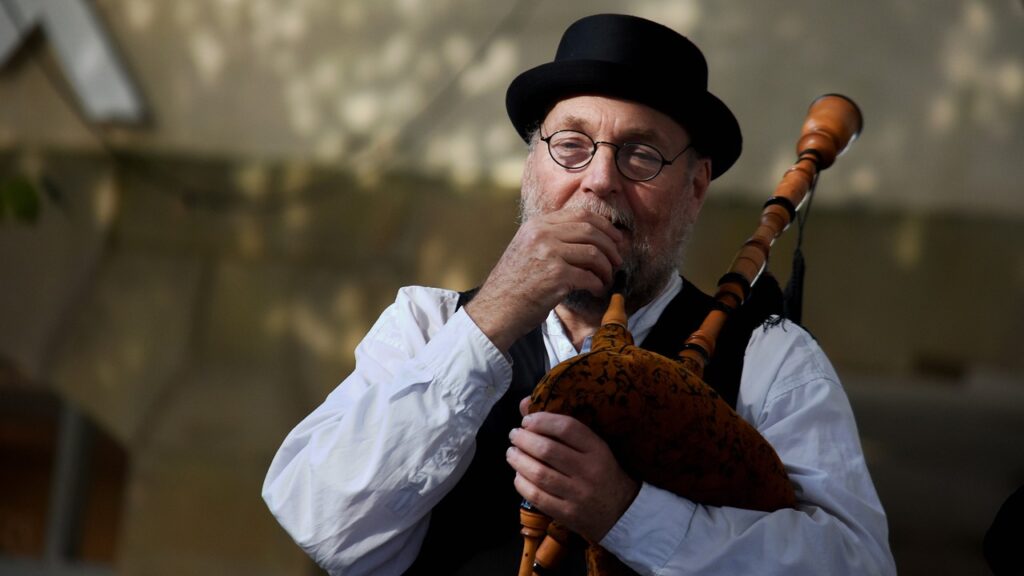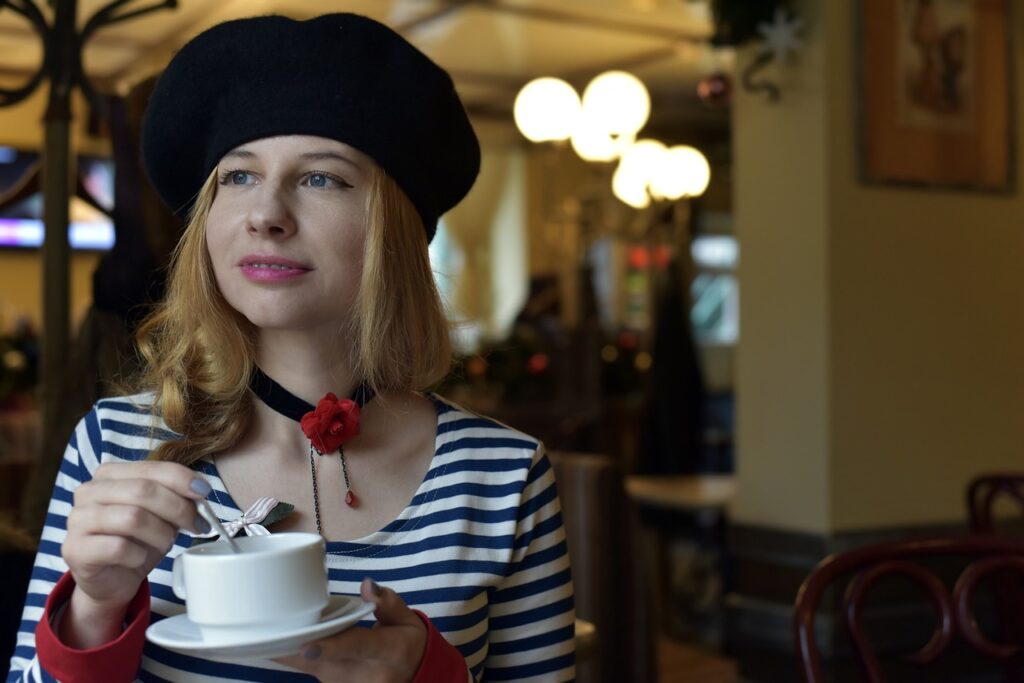French Traditional Clothing has its beauty. French fashion has always been known for its elegance and sophistication. Yes! Their fashion sense is just top-notch.
From the chic streets of Paris to the picturesque countryside, French traditional clothing reflects a rich history of style and culture. France has a rich history of fashion that has left an indelible mark on the world.
We will explore ten iconic pieces of French Traditional Clothing that have stood the test of time, each with its unique fashion sense. Let’s get started already!
10 French Traditional Clothing

1. The Beret
It is a simple yet iconic piece of headwear and holds a special place in the world of fashion. Originating in the Pyrenees mountains and Basque region, the beret has transcended its humble beginnings to become a symbol of French style and sophistication.
The beret’s history is a tale of practicality and adaptability. Originally crafted for the shepherds and peasants of the Basque region, its design was well-suited to their needs. Made
The beret provides warmth during the harsh winters, while its soft, flat shape makes it easy to fold and store when not in use. Its versatility allowed it to be worn in various ways, depending on the wearer’s preferences.
As time passed, the beret’s popularity began to grow beyond the Pyrenees.
It made its way to other parts of France and soon became associated with artists, intellectuals, and the bohemian crowd.
However, it was in the world of fashion that the beret truly found its fame. French designers and fashionistas recognized its unique charm and began incorporating it into high fashion.
It has graced the heads of countless film stars, musicians, and artists, both on and off the screen. Its association with creativity has made it a favored accessory among those who want to make a statement with their style.
Today, the beret remains a beloved fashion item, not just in France but worldwide. It can be worn by people of all ages and backgrounds, and its timeless design means it never goes out of fashion.
2. Breton (Striped Shirt)
The Breton striped shirt, often referred to as the “Marinière,” is a very simple yet great piece of clothing that holds a special place in the world of fashion. With its timeless design of navy blue and white horizontal stripes, this shirt has transcended generations and borders.
What makes the Breton striped shirt so enduring is its versatility. It effortlessly bridges the gap between casual and sophisticated, making it suitable for a wide range of occasions.
Pair it with jeans for a relaxed, everyday look, or dress it up with a blazer and slacks for a more polished appearance. Its adaptability is one of the reasons it has remained a staple in wardrobes around the world.
The Breton striped shirt’s influence is not limited to the fashion world; it has also permeated popular culture. It is often associated with a sense of laid-back elegance, and many celebrities, from fashion-forward designers to Hollywood actors, have embraced it as a symbol of effortless style.
In recent years, fashion designers have continued to reinvent the classic Marinière, experimenting with different colors, sleeve lengths, and materials while staying true to its essential striped pattern.
This evolution keeps the Breton shirt fresh and relevant while honoring its rich history.
3. Provencal Fabrics
It is also known as “Provence prints” or “Provençal textiles,” and is a captivating aspect of French textile tradition. These fabrics originate from the Provence region in southeastern France and have a rich history dating back several centuries.
With their vibrant colors and intricate patterns, Provencal fabrics have become loved around the world for their unique charm and beauty.
One of the most distinctive features of Provencal fabrics is their use of bold and cheerful colors.
Dominated by shades of yellow, blue, green, and red, these textiles evoke the bright and vibrant hues of the Mediterranean.
The colors reflect the abundant sunshine and natural beauty that define the region, making them an integral part of Provencal culture.
Patterns in Provencal fabrics are equally important as color. These fabrics often feature intricate designs inspired by the local flora and fauna.
You will find patterns of olives, lavender, sunflowers, cicadas, and grapes, among others. These motifs pay homage to the agricultural heritage of the region and the bountiful harvests that have sustained Provencal communities for generations.
Provencal fabrics are traditionally made from natural materials, such as cotton and linen. This choice of fabric not only adds to the textiles’ rustic charm but also makes them comfortable. The global appeal of Provencal fabrics is undeniable.
4. The Sablé Dress
It is a classic French garment known for its elegance. This knee-length dress has been a staple of French fashion for decades, and its timeless appeal continues to influence modern clothing styles.
The name “Sablé” actually refers to the type of fabric used to make this dress. Sablé fabric is typically made of a soft, fine material, often silk or a silk blend, which gives the dress its smooth and luxurious texture.
This fabric choice contributes to the dress’s comfort and graceful drape. It typically features a straight or slightly flared silhouette that skims the body without clinging too tightly.
The neckline is usually modest, with options ranging from boat necks to V-necks, and the sleeves can vary from short to long, depending on the desired style and occasion.
It can be dressed up or down, making it suitable for various settings and events. When paired with heels and statement jewelry, it becomes an excellent choice for formal occasions like cocktail parties or weddings.
Sablé dresses can also come in various patterns, including floral prints and geometric designs, to cater to different tastes and seasons.
5. Gilet
It is often called a vest or waistcoat in English, it is a versatile and sleeveless piece of clothing. It has become a popular fashion item known for its practicality and style.
Gilets come in various materials like wool, down, fleece, or synthetic fabrics, making them suitable for different weather conditions. Their sleeveless design provides freedom of movement and comfort.
These garments often feature pockets, zippers, or buttons, enhancing their functionality. Gilets can be dressed up with slacks and a shirt or worn casually with jeans and a T-shirt, making them adaptable for various occasions.
Outdoor enthusiasts, including hikers and campers, appreciate gilets for their core warmth and flexibility. They are excellent for layering during outdoor adventures.
6. The Crinoline Dress
It is a fancy dress that was popular a long time ago, mainly in the 19th century. It is for women, and what makes it special is its big, wide skirt. Imagine a skirt that looks very puffy and wide, like a big circle around the person wearing it. That is what a crinoline dress is like.
The secret behind its wide shape was something called a crinoline cage.
This cage was made of hoops or sometimes even wires that were put under the skirt.
These hoops made the dress stand out and look so grand.
The dress itself was often made from pretty fabrics, and it could be very colorful and beautiful.
Women who wore crinoline dresses looked very elegant, but it was not always easy to move in them. Walking through doorways or sitting down could be a bit tricky because of the wide skirt.
Despite the challenges, these dresses were a symbol of fashion and femininity in the 19th century.

7. The Chanel Suit
It is a famous and classic outfit created by the legendary French fashion designer Coco Chanel. This elegant outfit is designed for women.
The Chanel Suit consists of a few key elements that make it stand out.
It features a collarless jacket and a matching knee-length skirt.
What sets it apart is its simplicity and sophistication. The jacket is often made from high-quality materials like tweed or bouclé, which give it a textured and luxurious appearance.
The skirt is designed to be comfortable and practical, allowing women to move freely while maintaining a sense of refinement.
Over the years, the Chanel Suit has remained a symbol of sophistication and style. Its clean lines, impeccable tailoring, and attention to detail continue to influence the fashion industry.
8. The Bourrelet and Fontange
They are elaborate headdresses that were fashionable in 17th-century France. These headpieces were primarily worn by women and were a significant part of their attire during this period.
The Bourrelet was a padded roll placed on top of a woman’s head, giving the appearance of heightened elegance and grandeur.
It added height to a woman’s overall look, making her seem taller and more regal. Women often adorned the Bourrelet with ribbons, jewels, and lace to enhance its beauty and extravagance.
The Fontange, on the other hand, was a headdress with a complex structure of ribbons and lace that sat atop the Bourrelet. The Fontange headdress reached the height of fashion during the reign of Louis XIV and represented the opulence of the French court.
These headdresses were a symbol of wealth and status and were often worn by noblewomen to showcase their social standing.
9. French Lingerie
It is an exquisite, delicate underwear primarily designed for women. It is a symbol of sensuality, craftsmanship, and femininity. French lingerie is all about attention to detail, fine fabrics like lace and silk, and meticulous craftsmanship.
For women, French lingerie includes a wide range of garments such as bras, panties, corsets, camisoles, and more. These pieces are designed to enhance comfort and self-confidence while embracing a sense of allure and sophistication.
Lace plays a significant role in French lingerie, adding a touch of romance and elegance. French lingerie designers are known for creating undergarments that fit perfectly, providing both support and style.
10. Corset
It is a tightly-fitting undergarment, usually made of stiffened fabric or boning, designed to shape and support the torso. It has a long history in fashion, dating back to the 16th century, and has seen various forms and functions over the years.
Corsets were initially worn to achieve an hourglass figure, emphasizing a tiny waist while enhancing the bust and hips. During the Victorian era, they were particularly popular, often laced tightly to create a cinched waistline.
Final Words
French fashion has always been a source of inspiration for the world. From the runways of Paris to the streets of New York, French style is synonymous with elegance and sophistication.
From the beret to the Breton, gilet, corset, bourrelet fontang, and a host of other fashionable French Traditional Clothing. Today many people from all over the world love French fashion because it is always attractive, creative, and never goes out of style.
The attention to detail, the emphasis on quality, and the fusion of tradition with modernity make French Traditional Clothing and Accessories enduring symbols of fashion excellence.



